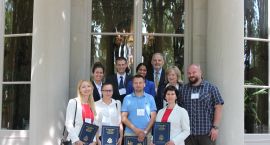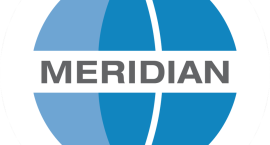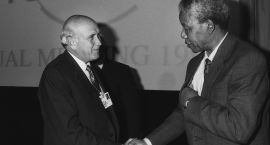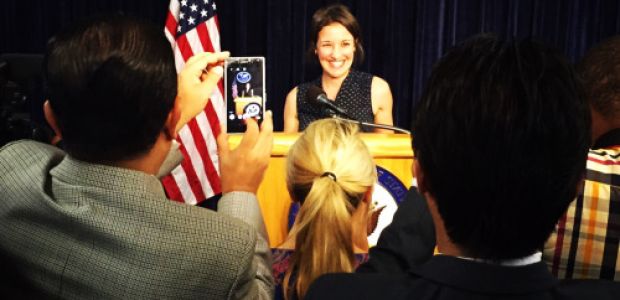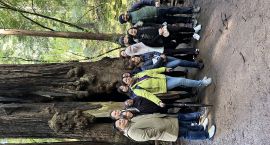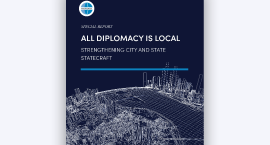This article is reposted from the Australian Broadcast Corporation’s (ABC) Back Story blog. Erin Vincent is the Executive Producer for ABC’s News Breakfast program. She participated in an International Visitor Leadership Program that I organized in the summer of 2015.
Erin Vincent was selected to participate in the U.S. State Department professional exchange program, the International Visitor Leadership Program, ‘Broadcast Journalism: New and Traditional Media’. 22 journalists from all over the world travelled through Washington, Syracuse, Portland and Chicago to hear from U.S. media professionals and tour media outlets to gain a deeper understanding of the history, practices and future of broadcast journalism in the U.S. Here, Erin shares her observations and what lessons can be applied in Australia.

What insights did you gain into broadcast journalism in the US and what are the key differences compared to Australia?
From an audience perspective, American broadcasters are much more locally focused than in Australia, with most channels offering little or no coverage of international news. In the US, there are approximately 220 local television markets and television networks broadcast local bulletins, just as WIN TV does in Australia. But the sheer size and population of the U.S. makes the scale of local news much bigger and broader in terms of coverage. I made this observation to a guest speaker while on the scholarship and he replied “If I’m living in Syracuse, and watching news about Chicago, that’s International… Chicago is the world.” Coverage of global news can be found if viewers seek it out. The Public Broadcasting Service (PBS), CNN, MSNBC, CBS and Al Jazeera America are the best options, but the mainstay on free to air and cable is heavily focused on local and national news.

There are also differences in the way media is regulated and governed in both countries. Free to air American broadcasters face much stricter regulations than cable television, which is significant due to cable being so widely accessible and influential in the U.S. A higher proportion of American households subscribe to cable television compared to Australia, yet many broadcast regulations only cover free to air networks. Cable networks have much more freedom to broadcast highly opinionated political commentators – with Fox (right-leaning) and MSNBC (left-leaning) the two most powerful. Interestingly, cable subscriptions in both countries are declining, as internet TV services like Netflix bite into their customer base.

From a journalist’s perspective, defamation cases are much more difficult to prove in the U.S. compared to Australia. To win a case, complainants must prove an outlet has knowingly published false material or published with reckless disregard for the truth. Cases are frequently settled out of court because they are so difficult to prove. When discussing examples of high profile defamation cases in our own countries, it became clear to me that many Australian defamation cases, would be unlikely to proceed to court in the U.S. Under American libel law, opinions are considered statements which can’t be proven true or false and therefore can’t be found to be defamatory.
While journalists in the U.S. may have the freedom to be more opinionated, there is ongoing concern among the White House press gallery over the Obama administration’s limitations on journalists’ access. President Obama regularly bans press photographers from attending key events and releases vetted images from his own personal photographer instead. The White House also regularly releases pre-recorded videos, denying journalists the opportunity to ask questions at press conferences, a strategy that was adopted regularly by the Abbott Government. In response to these restrictions imposed by the White House, America’s largest and most respected media organizations (including The New York Times) have written to the White House protesting against diminished access. This stood out to me as a major contradiction of one of the cornerstones of U.S. democracy – freedom of the press.
What did you learn about how the U.S. industry is changing in the digital age and what does the future look like?
The U.S. media industry is grappling with similar challenges facing Australia. Organisations are tailoring their content to suit a range of new and traditional platforms, endeavouring to reach new audiences and attempting to stay profitable. One of the most valuable things about this scholarship was it allowed me to visit places I otherwise never would, like Syracuse, a university town in upstate New York. Syracuse University has just undergone a $20 million dollar upgrade to its broadcast technology and studio capabilities, and is now leading the way in broadcast technology and training.

The studio capabilities are more advanced than those we use at the ABC and yet, are used for training purposes only. One area of focus is mapping and structuring stories from beginning to end so content can be maximised for audiences across broadcast and digital media. Further along the trip, when discussing journalism courses in the U.S. and the set-up at Syracuse, I discovered there is some concern that too much focus is being placed on the technological and digital aspects of journalism at the expense of the storytelling foundations of journalism – ethics, accuracy and investigative skills. I don’t think anyone can say with confidence what the media landscape will look like in 5 or 10 years, but I did learn about one futuristic concept (newsreaders look away now) – a journalist in the group told us of a robotic news reading service that’s being developed in Japan. Thankfully, this trend doesn’t seem to be taking off…yet!

What can Australian journalists learn from developments in the U.S.?
I came away from this trip realising that Australian journalists are at the forefront of digital journalism trends, however one of the biggest lessons I took away from the U.S. was the importance of collaboration. Australian media outlets across all platforms tend to view each other as competitors, whereas in America, particularly among new media, content sharing and cross promotion is enthusiastically embraced. The Huffington Post is a great example, drawing on other media outlets to make sure they are posting fresh content every 58 seconds.
One of the biggest challenges, both the U.S. and Australia are facing is converting long-form journalism into digital snack-size content. The consensus among U.S. broadcast media outlets is that long-form online journalism is now defined as having a three minute duration, and sustaining viewers for that long is considered quite an achievement. The most common strategy for tailoring current affairs style programs for digital viewing, is breaking content up into short chapters or segments with detailed sub-headings, so viewers can choose which elements of the story they want to view or skip over.

How are we placed at the ABC and what could we do better?
The ABC has achieved incredible growth in the digital space, and now has the third most clicked news site in the country. That momentum, along with the audience trust that is inherent in our brand, places the ABC in a hugely exciting position. But I think we should always be asking how we can improve our services. Reflecting our audiences in our content, and through the faces and voices that appear across our platforms is a crucial one. The cultural, gender, and demographic make-up of our content should reflect that of the Australian population. This is a challenge faced by the entire Australian television industry, but as the public broadcaster, the ABC has a greater responsibility to deliver in this area. American broadcast media has made huge gains in addressing this issue, with Trevor Noah’s appointment to The Daily Show seen as a new frontier in diversity on American television.
Another area, I think, we should be focusing on, is inviting our viewers to help shape our content. Direct audience engagement has never been easier or more immediate, so why not ask those who trust and consume our content what they want to see and hear more of, or less of for that matter. Let’s just cross our fingers that they don’t demand virtual newsreaders!









